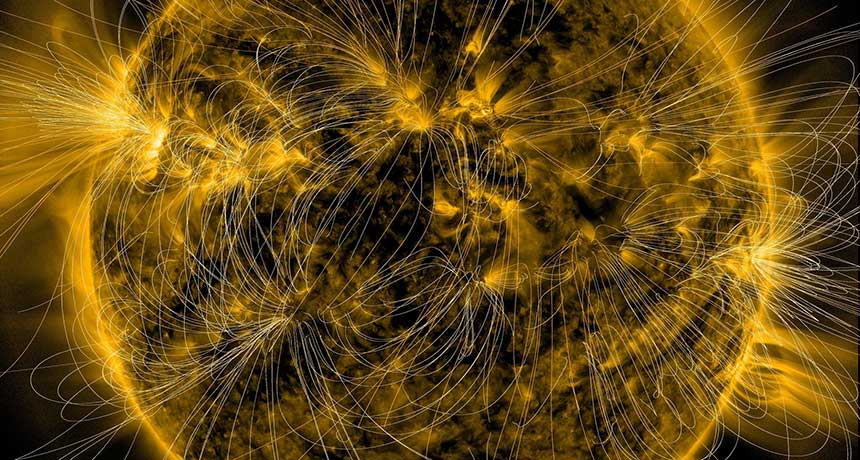Sun’s Magnetic Waves Behave Differently Than We Thought

In a recent report published in the journal Nature Astronomy, scientists from Northumbria University revealed that the Sun’s magnetic waves behave differently than we thought. That led the researchers coming up with new evidence for a brand new fundamental constant of the Sun.
The scientists from Northumbria’s Department of Mathematics, Physics and Electrical Engineering, after they’ve examined the data on the Sun gathered throughout ten years, discovered that the magnetic waves in the Sun’s corona respond to the sound waves that come from within the Sun, from the star’s innermost regions.
These mysterious magnetic waves, scientifically dubbed as Alfvenic waves, are essential in transferring energy around the Sun, as well as around the Solar System. Until now, the astrophysicists believed that these waves originate right at the Sun’s surface due to the hydrogen which boils to temperatures of 6,000 degrees and shakes our star’s magnetic field. According to the research, the sound waves coming from inside the Sun are leaving their mark on the Sun’s magnetic waves.
Sun’s Magnetic Waves Behave Differently Than We Thought
The scientists believe now that this marker (sound waves) makes the entire Sun’s corona to “vibrate” accordingly to it. The frequencies of that vibrations are clearly distinguishable.
“The discovery of such a distinctive marker – potentially a new constant of the sun – is very exciting. We have previously always thought that the magnetic waves were excited by the hydrogen at the surface, but now we have shown that they are excited by these sound waves. This could lead to a new way to examine and classify the behavior of all stars under this unique signature. Now we know the signature is there, we can go looking for it on other stars,” explained Dr. Richard Morton, the lead author of the study.
“Our evidence shows that the sun’s internal acoustic oscillations play a significant role in exciting the magnetic Alfvénic waves. This can give the waves different properties and suggests that they are more susceptible to instability, which could lead to hotter and faster solar winds,” Dr. Morton concluded.
0 comments